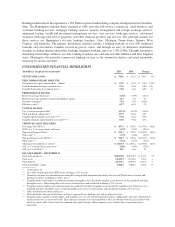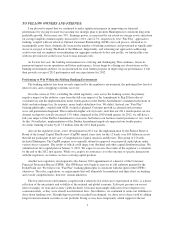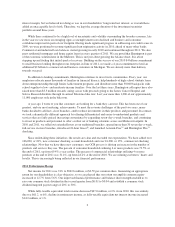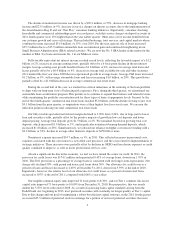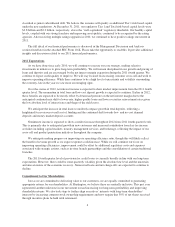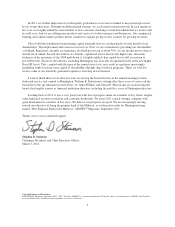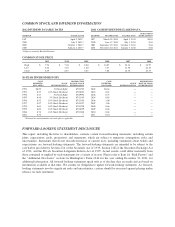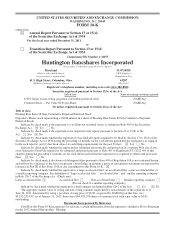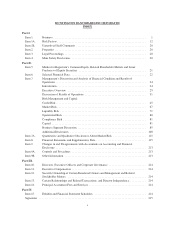Huntington National Bank 2011 Annual Report Download - page 6
Download and view the complete annual report
Please find page 6 of the 2011 Huntington National Bank annual report below. You can navigate through the pages in the report by either clicking on the pages listed below, or by using the keyword search tool below to find specific information within the annual report.
classified as junior subordinated debt. We believe this issuance will qualify as additional Tier 1 risk-based capital
under the new regulations. At December 31, 2011, our regulatory Tier 1 and Total risk-based capital levels were
$2.8 billion and $2.2 billion, respectively, above the “well-capitalized” regulatory thresholds. Our healthy capital
levels, coupled with our strong franchise and improving asset quality, continued to be recognized by the rating
agencies. After receiving multiple ratings upgrades in 2010, we continued to have positive ratings movement in
2011.
The full detail of our financial performance is discussed in the Management Discussion and Analysis
section found later in the attached SEC Form 10-K. Please take the opportunity to read this. It provides additional
insights and discussion related to our 2011 financial performance.
2012 Expectations
As we have done since early 2010, we will continue to execute our core strategy, making selective
investments in initiatives to grow long-term profitability. We will remain disciplined in our growth and pricing of
loans and deposits and are encouraged by the net interest margin expansion during the 2011 fourth quarter. We
continue to expect credit quality to improve. We will stay focused on increasing customer cross-sell and work to
improve operating efficiency. While there continues to be a high level of uncertainty and volatility surrounding
the economy, late in the year we saw more encouraging signs.
Over the course of 2012, net interest income is expected to show modest improvement from the 2011 fourth
quarter level. The momentum in total loan and low-cost deposit growth is expected to continue. Earlier in 2012,
these benefits are expected to be mostly offset by downward pressure on the net interest margin due to the
anticipated continued mix shift to lower-rate, higher quality loans and lower securities reinvestment rates given
the low absolute level of interest rates and shape of the yield curve.
We anticipate the increase in total loans to modestly outpace growth in total deposits, reflecting a
heightened focus on our overall cost of funding and the continued shift towards low- and no-cost demand
deposits and money market deposit accounts.
Noninterest income is expected to show a modest increase throughout 2012 from 2011 fourth quarter levels.
This is primarily due to anticipated growth in new customers and increased contribution from key fee income
activities including capital markets, treasury management services, and brokerage, reflecting the impact of our
cross-sell and product penetration initiatives throughout the company.
We anticipate making progress on improving our operating efficiency ratio, though this will likely reflect
the benefit of revenue growth as we expect expenses could increase. While we will continue our focus on
improving operating efficiencies, improvement could be offset by additional regulatory costs and expenses
associated with strategic actions, such as in-store branch partnerships and the consolidation of certain traditional
branches.
The 2011 fourth quarter level of provision for credit losses is currently broadly in line with our long-term
expectations. However, there could be some quarterly volatility given the absolute low level and the uncertain
and uneven nature of the economic recovery. Nonaccrual loans and net charge-offs are expected to continue to
decline.
Commitment to Our Shareholders
Just as we are committed to delivering value to our customers, we are equally committed to generating
appropriate returns for our shareholders. At Huntington, we believe these are mutually inclusive. This past year
represented another milestone in our movement toward increasing our long-term profitability and improving
shareholder returns. We also took steps to further align executives’ interests with long-term shareholders’
interests by increasing common stock ownership requirements and now require that 50% of net shares received
through incentive plans be held until retirement.
4


